After any number of grape tests here at Rancho d’El Borak, it turns out that the Concord seems to grow the best for me. Not as a wine grape, obviously – who wants to drink a wine that tastes like jelly? But it grows like crazy and produces better than any of the other half dozen varieties I’ve tried over the past decade.
Frontenac, which I picked up a few years back at a Fleet and Farm in central Minnesota, comes in a close second – it grew and produced a few clusters every June. The Cabernet I ordered from California grew a little but produced nothing. All the others burned down, fell off, and then sank into the swamp. So Concord it is, and here comes the jelly. CurrentYear() is grape vine expansion time*.
But who wants to buy a bunch of grape vines? Not I: in addition to being a deliberately lazy gardener, I work very hard to be a frugal one. So a couple months ago I tried a couple different ways to clone my favorite vine from cuttings. Here are the results.
Everyone, it seems, has a surefire way to start new plants. One guy on Youtube makes foot-long cuttings and lets them sit for a few weeks until they callous on the ends. A second puts his fresh cuttings in water to root. Everyone it seems has a unique tactic. But I saw one guy who is truly a slacker after my own heart: he dips his fresh cuttings in rooting hormone and just sticks them in the dirt. I figured that would be the best place to start.
Mr. Lazy seemed to have a little less success with this method than some of the others; he got fewer starts and they seemed to take longer to get going. Still, I have no problem planting twice as many cuttings as I’ll need grapevines, so long as the process is simple. Mr. Lazy did his cuttings in the spring, when the growth had recently kicked in. I started mine in January, so I really didn’t know what kind of success to expect. But I figured if January failed, I’d know by April and so would have plenty of time to do it “correctly”.
So I made 8 cuttings from one long branch, dipped the larger end in rooting compound, and stuck them in large container of left over potting mix. I watered it deep and put the pot in a semi-sunny spot near the pellet stove. Then I left it alone, other than an occasional watering.
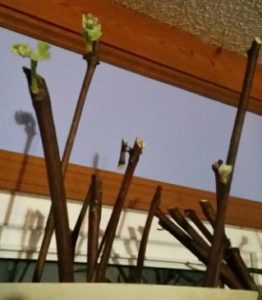
I awoke Saturday morning to find that five of those seven or eight pathetic-looking sticks had suddenly sprouted. Working from the assumption that what is happening above the soil is being mirrored beneath it, I will have at least 5 new Concord grape vines to transplant in a few weeks.
So the lazy way to start grapes from cuttings is working at about a 70% rate. I can live with that. But because I’m a sciency kind of guy**, I’ve got another experiment (cuttings in water) running a couple weeks behind. They have a little better success rate, but not much. By April I expect to have at least a dozen new vines that can start making the makings of jelly. Well, maybe by next year.
But I said all that to say this. When you start gardening, you’re going to hear a lot of experts telling you the way to do something, to grow something, to start something. But I have learned that there is seldom a single way to do anything in the garden. God made the plants to grow, and grow they will, with a little care from you.
If you want to follow a guru, you’ll have success. If you want to follow a few, you’ll have success. If you want to experiment, you’ll probably have success as well, though maybe of a more satisfying kind.
But never fail to start something, not even a grape vine, just because you don’t know how to do it perfectly. You don’t have to do it perfectly. But if you want anything out of your garden or vineyard or orchard, you must begin to do it. Even the lazy way.
* Of course, none of my renewed emphasis on food production this year has anything to do with the civil war being waged within our federal government. And by none I mean all.
** Or maybe I just don’t like to put all my grapes in one basket.
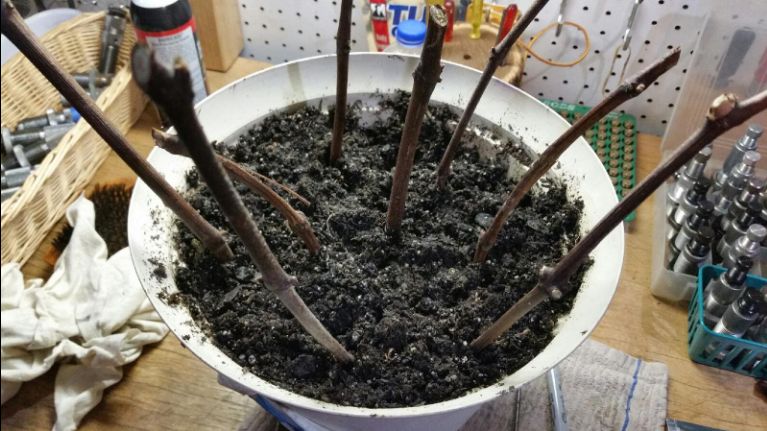
Latest from Gardening
Don't wait until you're hungry to learn how to raise food. Start now.
Go ahead. Cut cut cut cut cut cut.
I don’t know about you, but events of the past couple months haven’t put me in



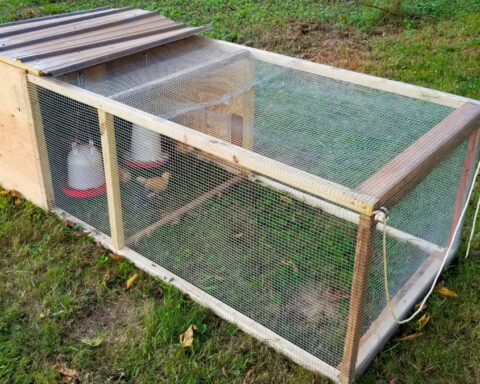
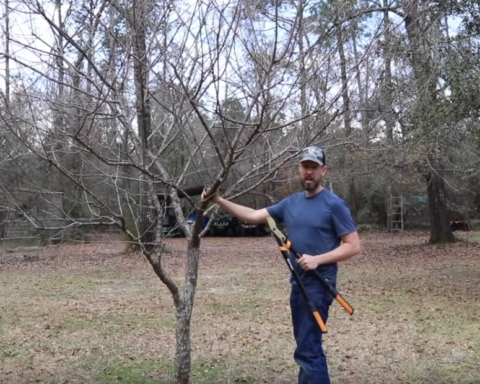
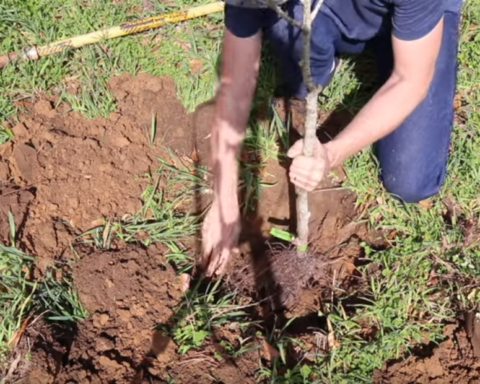
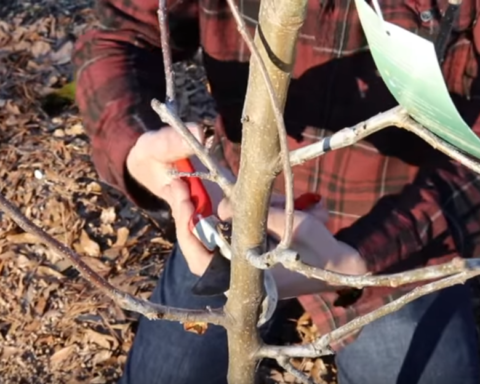

We have wild grapes in OK, locally called “possum grapes”, about the size of the pinkie fingernail. They are quite tart and make excellent jelly. We understand they are also very good for wine. We have a volunteer vine that almost encircles the fence enclosing our asparagus patch. Lord willing, we will have enough to try our hands at wine in the future.
Have a very sad but old and well-established concord grape vine. I’ll have to see about propagating it!
5